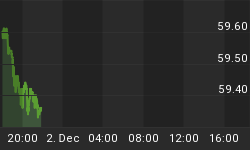In continuing our search for potential bankruptcy candidates (see part 1, The BoomBustBlog Pan-European Sovereign Debt Crisis Bankruptcy Search - US Banks), we would be remiss in ignoring the malaise that is currently British petroleum and their drilling partners. I have just released a report to subscribers (see end of post) laying out our empirical analysis of the probability of insolvency and default for British Petroleum and their drilling partner, APC. Below, I have included a summary for the general public.
Apart from the extreme headline risk British Petroleum faces:
- Obama Doesn't Expect BP to Make Itself Unviable, White House Official Says
- Obama Says Gulf Coast to Be Restored, Vows BP Will Pay for 'Recklessness'
- BP Faces 225 Oil-Leak Lawsuits as Cases Spread to States Beyond Gulf Coast
- BP One-Year Default Swaps Increase 432.5 Basis Points to 1,075, CMA Says
- BP tentatively agreed on Wednesday to create a $20 billion fund to pay claims for the worst oil spill in American history
There are very real potential and actual fundamental challenges facing it as well as its contracted partner, APC.
In order to estimate the probability of bankruptcy of BP and APC, we built three scenarios in which we have estimated the costs from the spill in Gulf of Mexico. While the cleanup costs are thus far being completely borne by BP (owning 65% and the current operator of the leaking well), the share of losses of APC (owning 25% in the leaking well) and Mitsui (owning 10%) will arise when BP contests for loss sharing in the courts. Since APC and Mitsui are only the financial owners with no strategic and operating interests in the leaking well, legal experts are giving a strong possibility that APC and Mitsui might escape most of the spill costs if it is proven that the explosion was largely owing to the negligence on the part of BP. Thus, for this initial qualitative portion of our analysis we assume the entire costs currently being borne by BP.
We have built three scenarios with varying assumptions about the flow rate and capture rate of the containment ships to arrive at the amount of oil that will be released till August 1, 2010 (scheduled date for completion of relief wells). Please note that the flow rate and capture rate assumptions are on the basis of the latest reported figures by government scientists and BP (who has a perverse incentive and conflicted interests). The actual flow rate and the capture rate are still uncertain. The average cleaning costs per barrel and the litigation and punitive damages estimates are based on analyst estimates.
The total estimated spill cost is $40.5 billion, $73.9 billion and $107.2 billion under optimistic, base and adverse case, respectively. The amount of losses already discounted in the prices is nearly $67.9 billion (not taking into consideration the very recent pop in the stock price) which is the difference between the current market cap and the market cap based on fair value per share using peer average 2011e P/E multiple.
We modeled the estimated spill costs in the projected cash flow position of BP over the next four years and it is observed that although the spill costs will result in excessive liquidity pressures in 2010 forcing BP to cut down on dividend and capex and raising fresh debt, the possibility of bankruptcy will arise only if BP is not provided the required funds. It should also be noted that it is our understanding that bankruptcy will probably not expunge BP's liabilities in regards to cleaning and rehabilitating the environment damaged by the spill. Based on the cash flow projections in which we have assumed cancellation of dividend in 2010 and cut down of capex by 50%, the total free cash flows in 2010 under Base case and Adverse case are -$40.4 billion and -$70.9 billion. Apart from any new debt requirements, BP also will need funds to refinance its maturing debt of nearly $1.3 billion and $6.0 billion in 2010 and 2011, respectively. BP has credit facilities of nearly $5 billion.
Thus, the survival of BP will primarily depend on availability of funds from the market (and barring a significant blowup stemming from the expanding Sovereign Debt Crisis) and the uncertainty around the spill costs will make the funding difficult.
Financial Analysis
| All figures in $ billion except per share data | |||
| Spill cost estimates (in $ billion) under each case | Optimistic case | Base Case | Adverse Case |
| Clean up costs | xxx | xxx | 58.3 |
| Fines under Clean water Act | xxx | xxx | 26.4 |
| Compensatory | xxx | xxx | 6.7 |
| Punitive | xxx | xxx | 19.6 |
| Other compensatory and punitive damages | xxx | xxx | 22.5 |
| Compensatory | xxx | xxx | 11.3 |
| Punitive | xxx | xxx | 11.3 |
| Total spill costs | xxx | xxx | 107.2 |
| All figures in $ billion except per share data | ||||
| Estimated Spill costs | Total estimated spill costs | BP's liability | APC's liability | Mitsui's liability |
| Base Case | xxx | xxx | xxx | xxx |
| Adverse case | 107.2 | 80.5 | 19.1 | 7.6 |
| Optimistic case | xxx | xxx | xxx | xx |
Subscribers (click here to subscribe or upgrade), please download the full analysis below:
















